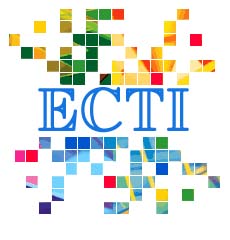Optimized Ion Implantation Profiles for the p-n Junction Using Forth Moment Approach for Application in High Frequency VLSI Circuits
Main Article Content
Abstract
The ion implantation based impurity doping profile across a p-n junction can be represented accurately using Pearson's fourth moment approach. The high-frequency characteristics of the reverse biased p-n junction (IMPATT diodes) are computed using different ion implantation profiles. It has been observed that the microwave properties of IMPATT diodes are very sensitive to the change in doping profiles. The optimized ion implantation profiles are suggested for different frequency bands to fabricate the reverse biased p-n junction for application in high-frequency circuits.
Article Details
This journal provides immediate open access to its content on the principle that making research freely available to the public supports a greater global exchange of knowledge.
- Creative Commons Copyright License
The journal allows readers to download and share all published articles as long as they properly cite such articles; however, they cannot change them or use them commercially. This is classified as CC BY-NC-ND for the creative commons license.
- Retention of Copyright and Publishing Rights
The journal allows the authors of the published articles to hold copyrights and publishing rights without restrictions.
References
[2] K. Chang, W. F. Thrower and G. M. Hayashibara, "Millimeter-Wave Silicon IMPATT Sources and combiners upto 260 GHz Range," IEEE Trans. Microwave Th. and Tech., MTT 29, No.12, pp. 1278-1284, 1981
[3] D. H. Lee and R. S. Ying, "Ion implanted complementary IMPATT diodes for D-band," Proceedings of the IEEE, V.62, No.9, pp1295-1296, 1974.
[4] S. P. Pati, J. P. Banerjee and S. K. Roy, "Effect of impurity charge bump on the dc and microwave properties of high e±ciency silicon double drift Impatt diodes," J of IETE, vol 31, No 1, pp. 22-27 (1985).
[5] D. N. Datta, S. P. Pati, J. P. Banerjee, B. B. Pal, and S. K. Roy, "Computer analysis of dc field and current density profiles of DAR IMPATT diodes," IEEE Trans. Electron Devices, ED-29, pp. 1813-16 (1982).
[6] A. K. Panda, G. N. Dash and S. P. Pati, "Effect of diffusion impurity pro¯le on microwave properties of Silicon p+nn+ Impatt diodes," Semi cond. Sci. and Technol., vol 9, pp. 241-248 (1994).
[7] A. K. Panda, G. N. Dash and S. P. Pati, "Computer aided optimization of ion implantation impurity pro¯les for n+npp+ double drift IMPATT diodes with three moment approach," Solid State
Electronics, vol. 39, 759-762 (1996).
[8] A. K. Panda and S. P. Pati, "Optimization of Ion Implanted Low-High-low Impurity Profile for Silicon n+pp+ SDR diode," IETE Technical Review, vol. 15, Nos. 1 and 2, pp.77-82, 1998.
[9] S. M. Sze, VLSI Technology, Tata McGraw Hill, Second Edition 2003, Chapter 8 (Ion implantation by M D Giles).
[10] A. K. Panda, E. Alekseev, and D. Pavlidis, "Noise characteristics of GaN-based IMPATTs," IEEE Trans. on Electron Devices, vol. 48, No.7, pp.1473-1475, 2001.
[11] B. L. Crowder, J. Electrochem Soc, 18, 943, 1971.
[12] A. K. Panda, E Alekseev, and D Pavlidis, "DC and high-frequency characteristics of GaN-based IMPATTs," IEEE Trans. on Electron Devices, vol. 48, No.4. pp.761-763, 2001.
[13] H Eisele and G. I. Haddad, "Active microwave devices," in Modern Semiconductor Devices Physics, S M Sze, Ed New York, Wiley, 1997, pp.343-407.
[14] S. K. Panigrahi and A. K. Panda, "High-Frequency and Noise Characteristics of Si=Si1¡xGex-based heterostructure IM-PATTs/MITATTs," IETE Technical review, vol 21, No.2, pp125-132, 2004.
[15] G N Dash, J K Mishra, and A K Panda, "Noise in Mixed Tunneling Avalanche Transit Time (MITATT) Diodes," Solid State Electronics, vol 39, No11, pp1473-1479, 1996.
[16] A K Panda, G N Dash, and S P Pati, "Computer aided studies on the wide-band microwave characteristics of silicon Double Avalanche Region (DAR) diode," Semiconductor Science and Technology, vol. 10, pp.854-864, 1995.
[17] S P Pati, Ph. D. Thesis, Calcutta University, 1984.


